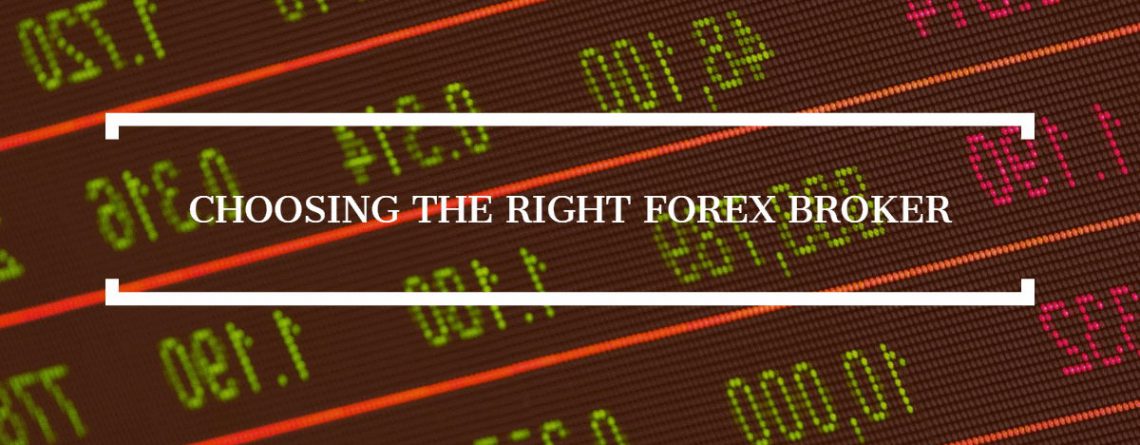One Financial Markets Review 2022
Contents
This ability to terminate financial contracts upon a counterparty’s insolvency thus preserves liquidity and permits the solvent party to replace the terminated contract without incurring additional market risk. Netting reduces the counterparty risk to financial institutions and thus reduces the “systemic” risks that the failure of one financial institution will cause a “domino” effect on other institutions and disrupt the financial markets. Bank supervisors have recognized the importance of close-out netting in reducing systemic risk to the financial system and have incorporated that recognition into advantageous capital treatment in U.S. and international bank capital regulations. Currently, banks’ procedures for stress testing their counterparty credit exposures are not as well developed as for market risk exposures. Many banks do not have adequate credit stress testing procedures, typically due to systems problems. Fragmented systems at large internationally active banks make it difficult to aggregate information.
However, on closer review, it appears that many of these closeout provisions are based on annual returns calculated either at year-end or on a 12 month rolling average basis. Given the potential smoothing of near-term poor performance by performance in prior months, triggers having this structure may be late or misleading signals of problems and the actions triggered may be untimely and ineffective mitigators fxtm website of risk. For a fund in deteriorating financial condition, a bank may not be able to execute closeout provisions for up to 12 months after the deterioration began. In this regard, institutions should ensure that when they negotiate closeout provisions, they employ prudent triggers that allow timely action in the event of a meaningful deterioration in the financial condition of a counterparty.
Hedge funds obtain economic leverage in various ways, such as through the use of repurchase agreements, short positions, and derivative contracts. In recent years, for example, government bond markets around the globe have become attractive investment locations for hedge funds, in part because of the liquidity of these markets and in part because of related repo markets that allowed the funds to leverage their positions. Some of these weaknesses were also evident, albeit to a lesser degree, in investment and commercial banks’ dealings with other highly leveraged counterparties, including other investment and commercial banks. Jurisdiction like the Cayman Islands, Section 304 permits a receiver appointed by the non-U.S. Court to seek an injunction (a “Section 304 Injunction”) in a U.S. bankruptcy court.
Securities of the Section 3 Fund owned by “knowledgeable employees” of the Fund or its investment adviser do not count toward the 100 security holder limit. In this study, we derive the Sharpe ratios by dividing the mean of the monthly returns by the standard deviation, or volatility, for each individual fund. Since all the numbers in Table 1 are averages of the statistics for individual funds, the average Sharpe ratio cannot be derived by taking the quotient of the other two columns. 16 Although an individual counterparty’s gross positions with the LTCM Fund might arguably have been smaller if they had been unable to rely on netting, this may not mean that the Fund’s gross positions would have been significantly smaller. It is possible that the LTCM Fund would have assumed the same gross positions by dealing with more counterparties.

In particular, unlike mutual funds, hedge funds are exempt from SEC reporting requirements, as well as from regulatory restrictions on leverage or trading strategies. They also face fewer limitations on the structure and size of fees they may charge. The sponsors of hedge funds that trade on organized futures exchanges and that have U.S. investors, however, are typically required to register with the CFTC as a CPO.
These instruments have unbundled the risks involved in financing real economic activity into distinct instruments that better match the preferences of investors. In doing so, they have most likely lowered the financing costs borne by the real sectors of the economy. The first involves clarifying the ability of certain counterparties to exercise their rights with respect to closeout, netting, and liquidation of underlying collateral abshire smith review in the event of the filing of a bankruptcy petition without regard to the Bankruptcy Code’s automatic stay. The content is developed from sources believed to be providing accurate information. Please consult legal or tax professionals for specific information regarding your individual situation. Some of this material was developed and produced by FMG Suite to provide information on a topic that may be of interest.
Complacency during favorable economic times also contributed to an atmosphere which gave rise to inadequate review and excessively liberal credit terms. In this atmosphere, theincident also raised questions concerning transparency and the adequacy of disclosure by highly leveraged institutions to their investors, creditors and counterparties in the markets in which LTCM was active. In any event, many of LTCM’s counterparties did not establish meaningful limits on their exposures to LTCM. Reviews by banking regulators and by the SEC indicate that financial firms did not fully understand LTCM’s risk profile and that some may not have adequately contemplated the market and liquidity risks that would have arisen if LTCM had defaulted.
Today’s economy has moved away from the direct intermediation of credit where banks were the primary repositories of savers’ wealth and channeled that capital to borrowers in the real sectors of the economy. In that traditional world, all risks, such as interest rate risk, liquidity risk, and credit risk were bundled together in bank deposits, bank loans, and the bank itself. A larger proportion of financial risks are held directly by investors in the form of tradable securities, with banks and securities firms increasingly acting as originators, market makers, or underwriters of those securities, instead of as investors or lenders. Some hedge funds, as well as other market participants, undertake investment positions on the relative prices of related assets when the relative prices diverge from either historical norms or from the levels justified by fundamental macroeconomic considerations. These investors provide liquidity to markets because they buy and sell assets against prevailing market sentiment with the effect of mitigating temporary supply and demand imbalances.
Open your account Apply in minutes.
The Investment Company Act does not contain broad prohibitions on a mutual fund’s investment in any particular type of instruments, including derivatives. A mutual fund that is investing, or may invest, in derivatives that present risks must provide prospectus disclosure about these transactions and the risks involved. The SEC also has emphasized the importance of the role of mutual fund directors in the oversight of fund derivative investments, risk management, internal controls, and disclosure, in order to assure that mutual fund assets are properly valued. The LTCM Fund engaged in OTC derivative transactions with about fifty counterparties. Some counterparties were even holding collateral to offset potential future exposure. In some cases, the LTCM Fund held very substantial OTC derivatives positions related to reference assets that were not actively traded.

The Fund reportedly had over 60,000 trades on its books, including long securities positions of over $50 billion and short positions of an equivalent magnitude. At the end of August, 1998, the gross notional amounts of the Fund’s contracts on futures exchanges exceeded$500 billion, swaps contracts more than $750 billion, and options and other OTC derivatives over $150 billion. The daily monitoring of exposures and the active management of exposure and collateral levels can help control the credit risk in a trading relationship.
Discover popular markets to trade
1 As discussed in greater detail below, however, it is possible that the liquidation of U.S. collateral pledged by the LTCM Fund to its counterparties could have been affected by Section 304 of the U.S. 37 To avoid double-counting, data on feeder pools was excluded, leaving about 270 pools. 10 A qualified purchaser that meets the $25 million threshold may act for its own account or for the accounts of other qualified purchasers. 6 Sections 3 – limiting beneficial ownership to 100 persons – and 3 – limiting investment to “qualified purchasers” – of the Investment Company Act of 1940. Prudential supervisors and regulators should promote the development of more risk-sensitive approaches to capital adequacy.
The broker offers an advanced trading environment through the provision of the highly popular MetaTrader 4 and MetaTrader 5 platforms. The Investment Strategies section consists of updated insights into the various aspects of forex trading, including such topics as the effects of trade wars, forex trading concepts, overtrading, and best beginner stocks to buy. The broker is also active across social media, allowing customers to remain abreast of company news and developments and provide feedback on a range of platforms.
Moreover, in the absence of additional injections of liquidity, further unfavorable market movements could have led to a default as soon as Wednesday, September 23. Thus, a very short period of time remained for the participants to explore resolution alternatives. While LTCM’s plight had been known to some market participants to varying degrees, no one had as yet stepped forward to offer an alternative that would avoid a default.
Spread looks small but they are opening spreads suddenly some time reaches 30$ for 1 or 2 seconds then return to normal but your account will be liquidated this point specially they are professional in close may account with 3000$ while ihave only hedge . We’ve been successfully supporting investment decisions with analyst research & pattern recognition since 1999. A cash market is a marketplace in which the commodities or securities purchased are paid for and received at the point of sale. Kirsten Rohrs Schmitt is an accomplished professional editor, writer, proofreader, and fact-checker.
How can I withdraw money from MultiBank?
In addition, one-way collateral agreements in which the hedge fund was required to post collateral to the dealer, but not vice versa, gave way to reciprocal collateral agreements where either party could be required to post collateral, depending on the direction of the credit exposure. Disclosures by hedge funds to counterparties and investors are often made using accounting and balance-sheet concepts. While such information includes notional amount and market value of derivatives contracts, the typical accounting statement is still not informative about the risk profile of trading activity (e.g., the nature of the exposures to market risk and credit risk). Nevertheless, compared with other trading institutions, hedge funds’ use of leverage, combined with any structured or illiquid positions whose full value cannot be realized in a quick sale, can potentially make them somewhat fragile institutions that are vulnerable to liquidity shocks. While trading desks of banks and securities firms may take positions similar to hedge funds’ investments, these organizations and their parent firms often have both liquidity sources and independent streams of income from other activities that can offset the riskiness of their positions.
Among other things, the foreign receiver can try to use the injunction to freeze temporarily actions by U.S. creditors that affect the bankrupt party’s U.S. assets. If LTCM had declared bankruptcy in the Cayman Islands, its Cayman receiver could have sought a Section 304 Injunction prohibiting at least temporarily the liquidation of U.S. collateral pledged by LTCM to its counterparties. Even a temporary delay in the liquidation of collateral could have had detrimental financial consequences for those parties holding that collateral.
One Financial Markets trading seminars are offered free of charge to both account holders and non-account holders. The News Room also features an economic calendar and updated company news to allow clients to remain abreast of internal changes to the company’s features, and the latest updates. The News Room supplies updated market news with market commentary and daily market update videos from the broker’s award-winning team of global market analysts. The customer support offering consists of a live chat option, a direct telephone number, and an online query submission form. One Financial Markets offers excellent and responsive customer support, with a dedicated customer service team located around the world, providing multi-lingual support 24 hours a day. The FCA has sweeping powers to enforce its mandate, including rule-making and investigative and enforcement powers.
More importantly, hedge funds tend to seek prices that either diverge from fundamentals or offer arbitrage opportunities. Since these circumstances are supposed to be temporary, the funds hope to make money and unwind their positions in a short period of time. The propensity of hedge funds to alter market positions quickly distinguishes them from pension funds and bank personal trusts. Mutual funds, however, are similar to hedge funds in that they can quickly liquidate portfolios, but because of cost, tax, and other considerations, they may be less likely to shift their market positions often.
Banks must fully understand both the strengths and weaknesses of any risk management system, particularly models. The DPG framework also provided guidelines for relationships between professional intermediaries and their nonprofessional counterparties regarding OTC derivatives transactions. The DPG framework includes standards of behavior that are intended to discourage overreaching by OTC derivatives dealers and facilitate understanding of transactions by nonprofessional counterparties through full disclosure.
Welcome to One Financial Services
The rising cost or reduced availability of funds provides a powerful economic incentive for firms to constrain their risk-taking. By the time the LTCM Fund got into serious financial difficulties, Bear Stearns had ceased to provide intraday clearing credit. However, Bear Stearns was still a major securities lending counterparty with the LTCM Fund, putting it in a position similar to the Fund’s repo and reverse repo counterparties.
Trading slippage AAA
Recognizing these deficiencies, many firms have begun to require enhanced disclosures from hedge fund counterparties in order to continue doing business. Commercial and investment banks have more diverse sources of revenue, as well as more diverse funding sources, than hedge funds, and hence they may be more able than hedge funds to ride out periods of market turbulence. In times of market turbulence, however, banks and securities firms may have more inflexible cost structures than hedge funds, due to significantly higher fixed operating expenses, and they may also have more illiquid assets. This may tend to offset the benefits of the more diverse sources of revenues and funding enjoyed by banks and securities firms. At the same time, banks, broker-dealers, and futures commission merchants(“FCMs”) are subject to federal government oversight that addresses risk management systems, public disclosure, and capital requirements. The parties to many of the transactions referred to in this section often rely on collateral from their counterparties.
Although individual counterparties imposed bilateral trading limits on their own activities with LTCM, none of its investors, creditors, or counterparties provided an effective check on its overall activities. Thus, the only limitation on the LTCM Fund’s overall scale and leverage was that provided by its managers/principals. From their perspective, the desire to maximize returns on each dollar of invested capital naturally created an incentive to increase leverage.
Each Technical Event® includes educational commentary and other data about the event and its expected impact on price action. Investors can continue to learn about any instrument through “Learn more” and “View Historical Events” buttons. This progressive disclosure of information provides new investors a jumping off point to begin trading and the ability to continue learning at their own pace.
If you sign up with One Financial Markets, you can count on a 10% deposit bonus up to the limit of $2,500. The bonus comes with an expiry date of 90 days and is only meant as trading credit. The bonus refers only to the Standard account and is not available with the DMA account.
Pre-settlement risk represents the current mark-to-market amount of counterparty positions, plus an estimate of potential future exposure (“pFE”), i.e., how large that current mark-to-market might become over the life of the contract. The PFE reflects camarilla pivot points accuracy the possibility that the current credit exposure may increase as a result of future market movements. The PFE provides a measure ofpossible future changes in market value, at a specified confidence interval, over some defined horizon .
The inability to execute active trading strategies can lead to unexpectedly large mark-to-market losses as positions that had been thought of as modifiable exposures become longer-term positions. The diverse collection of institutions, including hedge funds, that engage in trading activity can be characterized by similarities in their use of mark-to-market discipline, leverage, and active trading. Importantly, the performance of many hedge funds historically has not been highly correlated with overall market performance, thus accounting for their inclusion in the portfolios of wealthy individuals and institutional investors who seek a broad diversification of their investments.
Rating the credit risk of individual loans through regular credit evaluations is fundamental to a sound credit process. Such evaluations allow timely detection of changes in portfolio quality, and enable management to modify portfolio strategies and to intensify the supervision of weaker credits. Examiners review the bank’s risk rating definitions and processes for reasonableness.
Permalink Comments off



